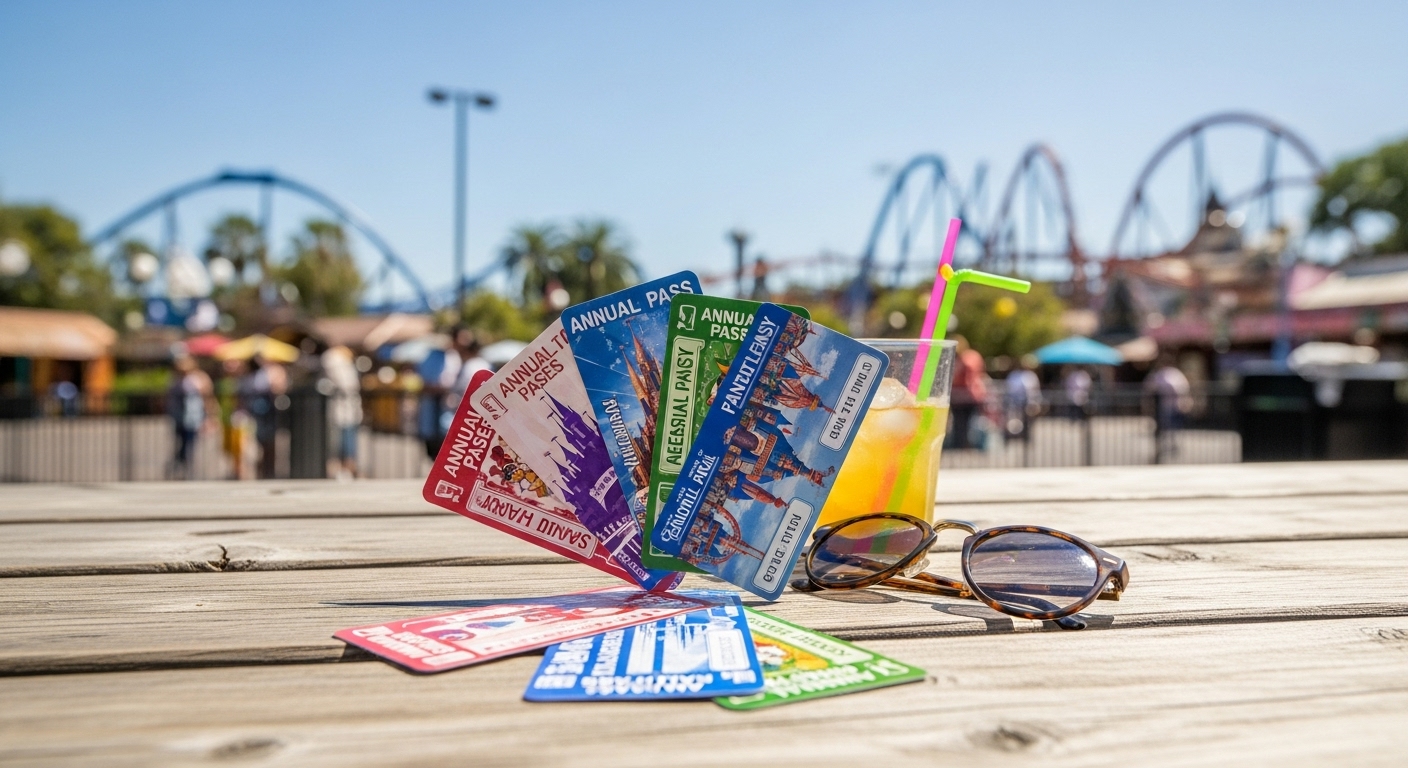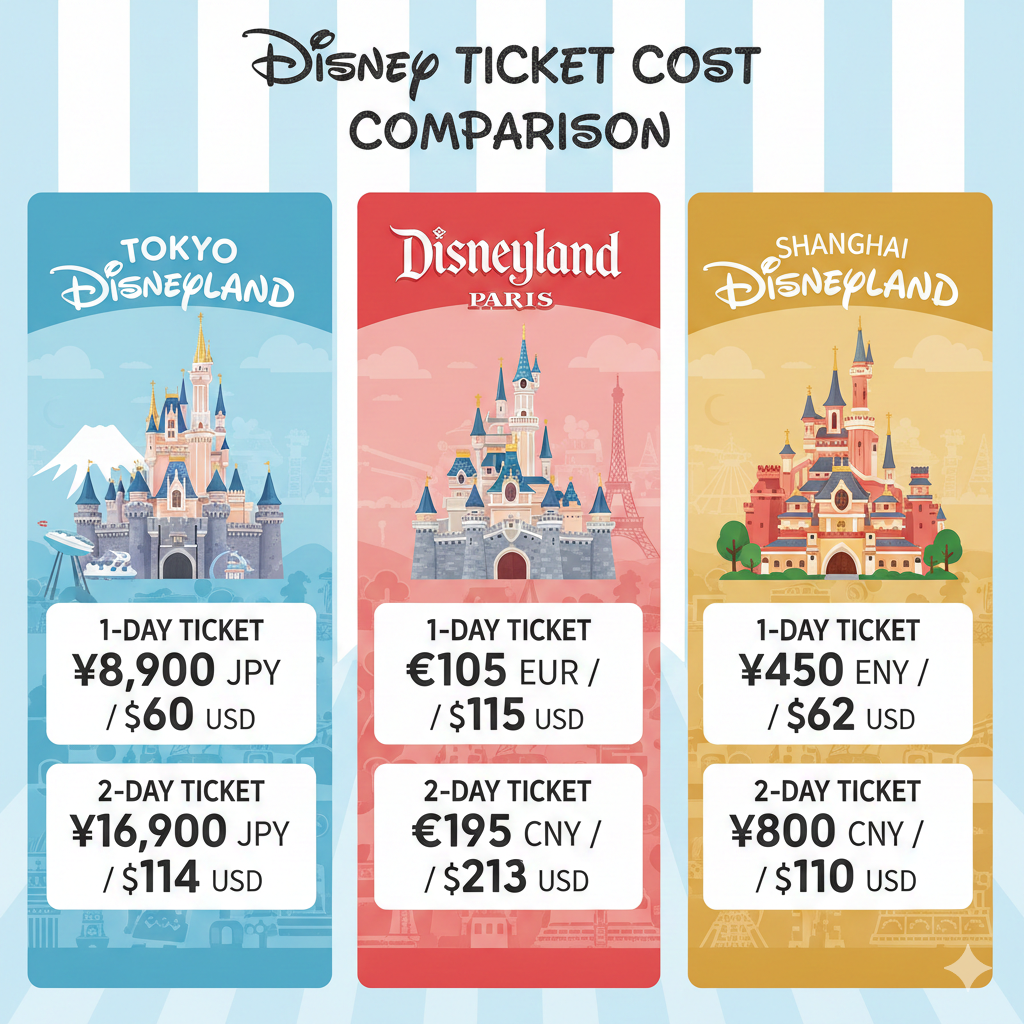
Please share and like Thank you
Category: Theme Park Passes
# Theme Park Passes That Pay For Themselves: A 2-Visit Guide
Have you ever stood at a theme park ticket window, looked at the price for a single day, and felt your wallet physically cringe? A day of thrilling coasters and family fun can easily cost a small fortune, a reality underscored by high single-day prices at many parks (for example, check the current rates at Magic Springs Theme and Water Park). But what if I told you that for the price of just two visits, you could unlock an entire season of adventure? Many people wonder, “Are season passes worth it?” The secret lies in finding the right theme park passes that pay for themselves in just two visits, turning a costly one-time splurge into an incredible year-long investment. This guide is your roadmap to identifying those golden tickets and finding theme park passes with quick payback.
Top Theme Park Passes That Pay Off in Two Visits
How to Maximize Theme Park Passes That Pay for Themselves
Frequently Asked Questions (FAQ)
Conclusion: Unlock a Season of Fun
Why Theme Park Passes Pay for Themselves Quickly
The concept is simple but powerful: a season pass’s “breakeven point” is the number of visits required for the pass to be cheaper than buying individual day tickets. While some premium passes might take three or four visits, the gold standard for savvy park-goers is the two-visit breakeven, a goal easily achieved with many passes like those offered at Canada’s Wonderland. Why? Because it’s an incredibly achievable goal.
Even the most casual local families or vacationers planning a long weekend can easily hit two days at a park. Once you cross that threshold, every subsequent visit for the rest of the season is essentially free. This transforms your mindset from “How much is this trip costing us?” to “What free adventure can we have today?” It’s the key to finding theme park passes that pay off in two visits, maximizing both your fun and your budget.

Calculate Your Personal Breakeven Point
Before you buy, it’s crucial to calculate your own breakeven point. The “two-visit” rule is a great guideline, but personal spending habits—like food, merchandise, and parking—can accelerate your return on investment (ROI) even faster.
> Quick Calculation Guide:
>
> 1. Find the Pass Cost: Note the all-in price of the season pass you’re considering. (e.g., $150).
> 2. Calculate Visit 1 Cost: Add the price of a single-day ticket (`$85`) and standard parking (`$30`). Your total for one day without a pass is $115.
> 3. Calculate Visit 2 Savings: On your second visit, you’d normally pay another `$115`. With the pass, your admission and parking are covered. You’ve now avoided `$230` in costs for a `$150` pass, putting you $80 ahead.
> 4. Factor in Perk Savings: Now, consider in-park spending. If your pass offers a 15% discount and you spend `$100` on food per visit, that’s an extra $15 in savings each time. Over two visits, that’s another $30, making your pass an even better deal.
By considering your total expected spending, you can see how theme park passes that pay for themselves do so not just on admission, but on the entire experience.
Top Theme Park Passes That Pay Off in Two Visits
Not all passes are created equal, but several major park chains have structured their pricing to hit this sweet spot. Here are the top contenders where you can find season passes worth it in two visits.
- Six Flags: The Six Flags Pass is a classic example. Often, their entry-level season pass is priced just slightly higher than a single full-priced day ticket purchased at the gate. By the time you factor in the cost of parking for two separate visits (which is usually included with the pass), you’re often already saving money.
- Cedar Fair Parks (Cedar Point, Knott’s Berry Farm, etc.): Cedar Fair’s Gold Pass is legendary for its value. Specific to one park, like Cedar Point, it frequently costs less than two single-day admissions. For example, if a day ticket to Knott’s Berry Farm is $99 and a Gold Pass is $145, your second visit immediately puts you in the green.
- SeaWorld & Busch Gardens Parks: These parks, part of the SeaWorld Parks & Entertainment family, often run deals where their “Fun Card” (a basic season pass with blackout dates) is offered for the price of a single-day ticket. While it may not include perks, the raw admission value is immediate. Upgrading to a Silver, Gold, or Platinum Pass often requires a second visit to break even but immediately unlocks valuable perks that accelerate your savings.
How to Maximize Theme Park Passes That Pay for Themselves
The true value of a season pass explodes when you factor in the included perks. Beyond admission, these extras significantly reduce your per-visit spending and can make passes that pay off fast worthwhile even sooner than the two-visit rule suggests. Key perks to look for include:
- Free Parking: With parking fees often costing $30 or more per day, a pass that includes free parking can save you over $60 in just two visits, drastically speeding up your return on investment.
- Food & Merchandise Discounts: A consistent 10-20% discount shaves a significant amount off your in-park spending on meals, drinks, and souvenirs over the course of a season, making every purchase a little more affordable.
- Skip-the-Line Privileges: While not always included with base-level passes, premium-tier passes may offer a set number of single-use fast passes or significant discounts on daily express passes, saving you hours of waiting in line for popular attractions.
- Exclusive Events: Passholders are often treated like VIPs with access to special events such as early park entry, exclusive ride nights after the park closes to the public, previews of new attractions, and “Bring-a-Friend” free or discounted ticket days.
Frequently Asked Questions (FAQ)
Q: What’s the difference between a Season Pass and an Annual Pass?
A: The terms are often used interchangeably, but typically a “Season Pass” is valid for a park’s operating season (e.g., spring through fall, plus any holiday events). An “Annual Pass” is usually valid for 365 days from the date of purchase. Always check the specific terms and conditions for the pass you are considering.
Q: Should I buy my pass online or at the park?
A: It is almost always cheaper to buy your pass online and in advance. Parks run online-exclusive sales, and the price at the front gate is typically the highest you can pay. Buying online also saves you time waiting in line on your first visit.
Q: Are perks like free parking and food discounts really that valuable?
A: Absolutely. As shown in the calculation guide, perks can dramatically accelerate your breakeven point. A single day of parking can cost $30+, so a pass including parking nearly pays for a third of its value on your first visit alone. Food and merchandise discounts of 10-20% add up quickly, especially for families.
Q: What if I only plan to visit once? Is a pass ever worth it then?
A: Generally, a single-day ticket is your best bet for a single visit. However, watch for special promotions. Some parks, like SeaWorld or Busch Gardens, occasionally offer their most basic pass (like a “Fun Card”) for the same price as a one-day ticket, making it a no-brainer to get one of these theme park passes that pay for themselves just in case your plans change.
Conclusion: Unlock a Season of Fun
The next time you plan a theme park outing, think beyond the single-day ticket. As this guide illustrates, the right season pass is not an extravagance reserved for super-fans; it’s a strategic investment for any family or individual planning to visit just twice. By calculating your personal breakeven point and factoring in high-value perks like free parking and in-park discounts, you can easily find a pass that saves you money by your second trip through the gates.
Major park chains like Six Flags, Cedar Fair, and SeaWorld have made this value proposition a core part of their pricing strategy. By seizing one of these opportunities, you transform a costly one-time splurge into a passport for a whole season of adventure, turning “Should we go?” into “What’s stopping us?” A little research upfront is all it takes to unlock countless days of fun with theme park passes that pay for themselves and then some.
Like this:
Like Loading...
Related





